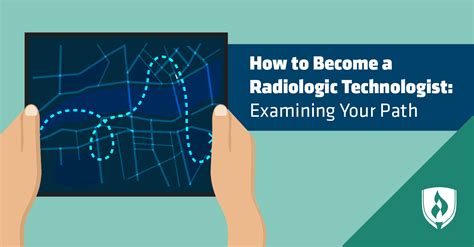How To Become a Radiology Technologist: A Comprehensive Guide
Becoming a radiology technologist is a rewarding career path for those interested in healthcare and technology. This comprehensive guide will walk you through the necessary steps to achieve your goal, covering education, certifications, and job prospects.
1. Education: The Foundation of Your Career
The cornerstone of a successful radiology technology career is a strong educational foundation. This typically involves completing an accredited educational program.
Associate Degree (A.S.) vs. Bachelor of Science (B.S.)
While an Associate's Degree in Radiologic Technology is the minimum requirement in many areas, a Bachelor of Science degree is increasingly preferred and offers several advantages.
- A.S. Degree: This program usually takes around two years to complete and focuses on the core skills and knowledge needed for entry-level positions.
- B.S. Degree: A four-year program that builds upon the A.S. curriculum, often including advanced coursework, research opportunities, and potentially specialization options. Graduates often have better career advancement prospects.
Program Accreditation:
Crucially, ensure the program you choose is accredited by the Joint Review Committee on Education in Radiologic Technology (JRCERT). Accreditation guarantees that the program meets specific quality standards and that your education will be recognized by employers and licensing boards. This is a non-negotiable step.
Curriculum Highlights:
Radiology technology programs typically cover a broad range of topics, including:
- Anatomy and Physiology: A solid understanding of the human body is essential.
- Radiation Physics: Understanding radiation principles and safety is paramount.
- Imaging Techniques: This involves hands-on training with various imaging modalities like X-ray, CT, MRI, and fluoroscopy.
- Patient Care: Effective communication and patient interaction skills are crucial.
- Radiation Safety and Protection: Learning to minimize radiation exposure to both patients and technicians.
2. Certification and Licensure: Gaining Credibility
After completing your education, you'll need to obtain the necessary certifications and licenses to practice legally.
American Registry of Radiologic Technologists (ARRT):
The ARRT is the leading certifying organization for radiologic technologists in the United States. Passing the ARRT certification exam is a vital step in your career progression. This is a nationwide credential.
State Licensure:
Most states require licensure in addition to ARRT certification. The specific requirements vary by state, so research your state's licensing board for details.
3. Gaining Experience: Practical Application
Practical experience is invaluable. Many programs incorporate clinical rotations, providing hands-on experience in different radiology settings.
Internships and Clinical Rotations:
These rotations allow you to apply your classroom learning under the supervision of experienced professionals. They also provide networking opportunities.
4. Job Prospects and Career Advancement: Looking Ahead
The job outlook for radiology technologists is generally positive, with consistent demand in hospitals, clinics, and imaging centers.
Specialization:
With experience, you can choose to specialize in areas like:
- Computed Tomography (CT)
- Magnetic Resonance Imaging (MRI)
- Mammography
- Sonography
- Radiation Therapy
Each specialization requires additional training and certifications.
5. Continuous Learning: Staying Current
The field of radiology technology is constantly evolving, with new technologies and techniques emerging regularly. Continuing education is crucial for staying current and enhancing your skills. Consider professional development opportunities, workshops, and conferences.
Becoming a radiology technologist requires dedication and hard work, but the rewards—both personal and professional—are significant. By following these steps and maintaining a commitment to lifelong learning, you can build a fulfilling and successful career in this vital healthcare profession.
